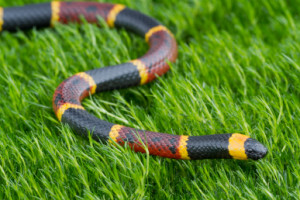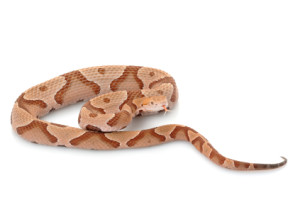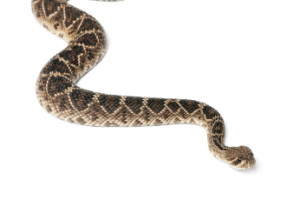
A brightly colored but usually small snake
ColorRed, yellow and black bands
SizeFrom 3-5 feet long
HabitatMost of the southern United States in a variety of environments including wooded areas, coastal plains, as well as semiarid regions
Interesting Facts“Red on yellow, kill a fellow; Red on black, friend of Jack” can be used to differentiate the poisonous coral snake from its non-poisonous relatives

Camouflaged pit viper snake with a very wide head
ColorPale tan to pinkish tan with darker accents
SizeFrom 20-40 inches
HabitatCan be found in forests and woodlands, but have also been found in rocky regions and swampy areas
Interesting FactsWhen they are babies the tip of Copperhead snakes’ tails are bright yellow

The largest rattlesnake species with a patterned appearance
ColorBrown to brownish-yellow to grey with black accents
SizeLengths of 3-6 feet are average but they have been documented at almost 8 feet long
HabitatThe southern United States in pine forests, sand hills, coastal areas, swamps and marshes; also in more urban areas
Interesting FactsThe Eastern Diamondback Rattlesnake is the heaviest venomous snake in the world, weighing in at a record 34lbs.